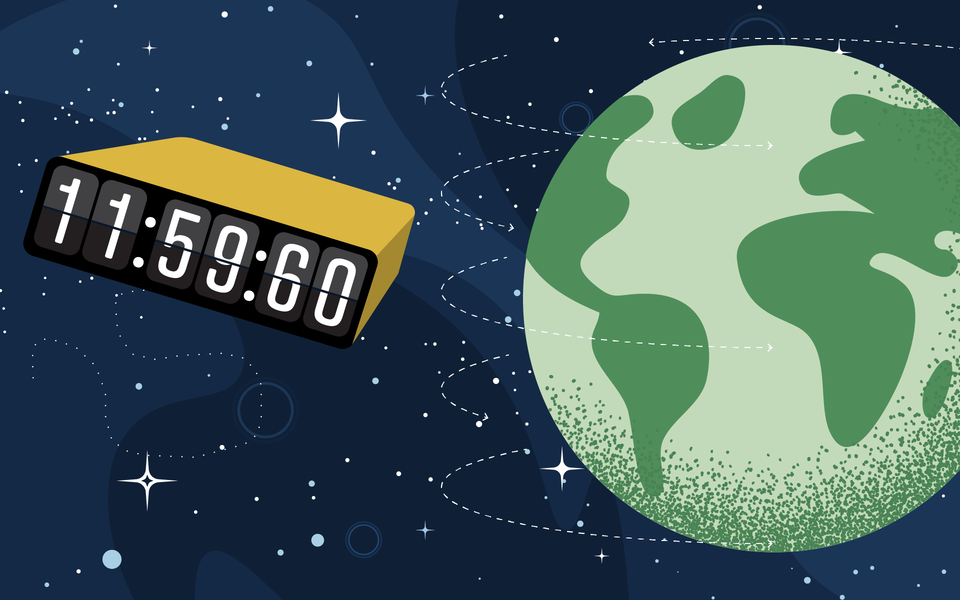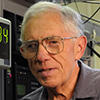Taking Measure
Just a Standard Blog

This is part 5 in a series. Read part 1, part 2, part 3 and part 4.
The Leap Second Solution
When atomic clocks were developed in the 1950s, scientists needed to match the time and frequency of these new devices to the long-standing astronomical definitions of these same parameters in order to enable a smooth, continuous transition from astronomical to atomic time.
The transition between astronomical time and atomic time was based on measurements made over a three-year period from 1955 to 1958. The measurements were a joint effort of William Markowitz at the U.S. Naval Observatory in Washington, D.C., and Louis Essen and Jack Parry at the National Physical Laboratory in the U.K. The length of the second based on the frequency of the atomic clock that was derived from these measurements was somewhat shorter than the astronomical second, so that clocks that used the atomic-clock frequency were fast with respect to astronomical time by about one second per year.
In other words, the instant of noon measured by atomic clocks occurred somewhat before noon in Greenwich mean time. (Recall that noon in Greenwich mean time is mean solar time on the Greenwich meridian — the instant when the fictitious Sun crosses the Greenwich meridian. The real Sun will cross the Greenwich meridian earlier or later, given by the equation of time for each day of the year.) If nothing was done to address the difference between atomic time and mean solar time, atomic time would diverge from mean solar time at a rate that was variable and unpredictable. However, the average rate of divergence of about one second per year was considered unacceptably large.
The initial solution was to adjust the frequency of atomic time — effectively to slow down atomic clocks so that they did not get ahead of astronomical time. These frequency adjustments were combined with fractional-second time steps. The method was unwieldy and confusing — some clocks incorporated the adjustments in time and in frequency and others did not.
A new adjustment procedure was adopted starting in 1972. The adjustment procedure described in the previous paragraph had accumulated 10 seconds by then. In order to keep atomic time reasonably close to mean solar time, “leap seconds” were added to atomic time starting in 1972 and the frequency adjustment method was discontinued. The leap second effectively stops the advance of clocks based on the atomic frequency for exactly one second to allow astronomical time to catch up. The name of the leap second is 23:59:60, and it is generally added on the last day of June or December whenever the difference between atomic time and astronomical time approaches 0.9 seconds. The second after the leap second is named 00:00:00 of the next day.
Twenty-seven leap seconds have been added in the 49 years since 1972, so that the average interval between leap seconds since 1972 is about 49/27 = 1.8 years, but the interval is very variable, and the average is not very significant. For example, the last leap second was added at the end of December 2016, and it is unlikely that a leap second will be needed in 2021 or 2022, so that the current interval between leap seconds will be at least five years and possibly longer. It is not clear if, or for how long, this hiatus will continue.
There have even been a number of suggestions that the rotation rate of Earth will increase enough to reverse the current situation and make the length of the mean solar day shorter than the length given by atomic clocks. Atomic clocks would fall behind mean solar time in this situation, and a “negative” leap second would be required — atomic clocks would advance from 23:59:58 to 00:00:00 of the next day, skipping 23:59:59. Negative leap seconds are possible in principle but are unlikely in practice.
The leap second insertion results in a number of practical difficulties. It introduces a step in time intervals that cross the leap second — there is an extra second between 23:59:59 of one day and 00:00:00 of the next day that is present only when a leap second is added. A more serious issue is that most clocks cannot display the time 23:59:60, and so there is no unambiguous method for applying a time stamp to an event that happens during the leap second. Furthermore, unlike the leap year algorithm, which adds a leap day in a predictable manner, the need for a leap second is difficult to predict very far in advance, and there is no way of determining the occurrence of past leap seconds without a look-up table.
The ambiguities in elapsed time and time interval that result from the insertion of the leap second are similar to the ambiguity associated with the addition of the leap day every four years. The ages of people are generally connected to their birthdays — the day on the calendar when they were born. However, age might also be considered to be the number of heartbeats since birth. The two ages diverge because the leap days do not count in calendar time but do count in “heartbeat” time.
The leap second introduces the same problem. There is a difference between the physical speed of an object and the speed calculated by dividing the distance traveled by the elapsed time when the time period crosses a leap second, since the interval of the leap second is not included in the difference of the starting and ending times. The time signals transmitted by global navigation satellites do not include leap seconds for this reason. (The leap second value is transmitted in a separate data message.)
A number of solutions have been proposed to address these problems. Some clocks are effectively stopped at 23:59:59 for an extra second on a leap second day, so that two consecutive seconds have the same name. Another solution is to slow the advance of the time on a leap second day to amortize the extra second over some period of time. The time increases monotonically with this method, although the rate of advance is not correct during the adjustment period. Both these solutions have problems.
There are also proposals to stop inserting leap seconds altogether or to decrease the need for them by allowing atomic time and astronomical time to diverge by more than the current limit of 0.9 seconds.
All these solutions have advantages and drawbacks, and the question is still being actively discussed.






I have really enjoyed this series and the authors perspective. I hope this series is able to continue.
Thanks